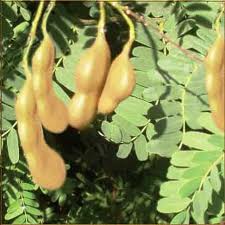| PlantID | 0126 |
| Botanical Name | Tamarindus indica |
| Common Name | Imli |
| Classification | | Kingdom: | Plantae | | Subkingdom: | Tracheobionta | | Division: | Magnoliophyta | | Class: | Magnoliopsida | | Subclass: | Rosidae | | Order: | Fabales | | Family: | Fabaceae | | Genus: | Tamarindus | | Species: | indica |
|
| Part used | Fruit, leaves, seed-kernel, stem-bark. |
| Medicinal Properties | Laxative, Anthelminthic, antimicrobial, antiseptic, antiviral, astringent. |
| Medicinal Use | Seed-kernel: used as milk purgative and stimulant; fruits: used as liver tonic, gastropathy, bilious vomiting, datura poisoning, alcoholic intoxication, dipsia, stoamachic, constipating; Leaves: juice useful in bleeding piles and dysuria, swellings, fever, scalding of urine, gastropathy, helminthiasis, wounds. |
| Chemistry | Tartaric acid, citric maleic acid potassium bitartarate, oxalic acid, polysacchaarides, flavonoid, tannins, saponins, sesquiterpenes, alkaloids and phlobatamins. |
| Cultivation | Seeds can be scarified to enhance germination. They retain germination capability after several months if kept dry. |
| Regional Habitat | Throughout Rajasthan growing wild. |
| Description | A moderate-sized to large evergreen tree, upto 24 meter in height and 7 meter in girth. Bark: horizontally and longitudinally fissured, dark-grey or brownish. Leaves: alternate, paripinnate, upto 15cm long, leflets generally 10-20 pairs, sub-sessile, oblong. Flowers: borne in lax few-flowered racemes at end of branchlets, small, yellow with pinkish stripes. Pods: flat, obovate, dehiscent, scurify, brown ash-colored. Seeds: 3-12, obovate-oblong, compressed, with a shallow oblong pit on each side of the flat faces, smooth, dark brown. |
| Image |  |


